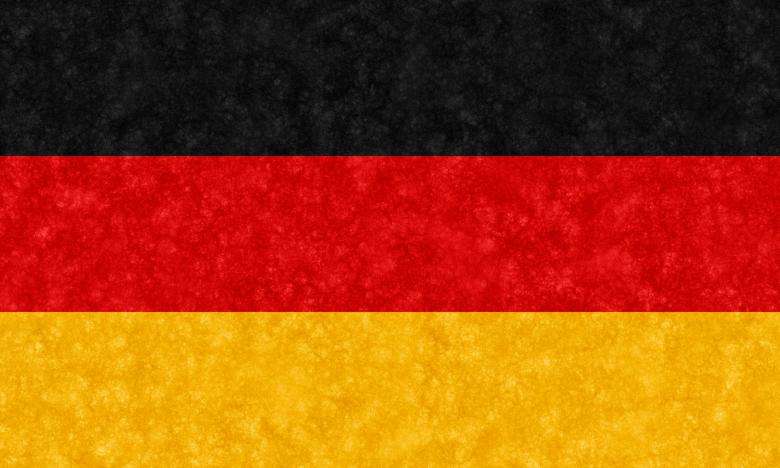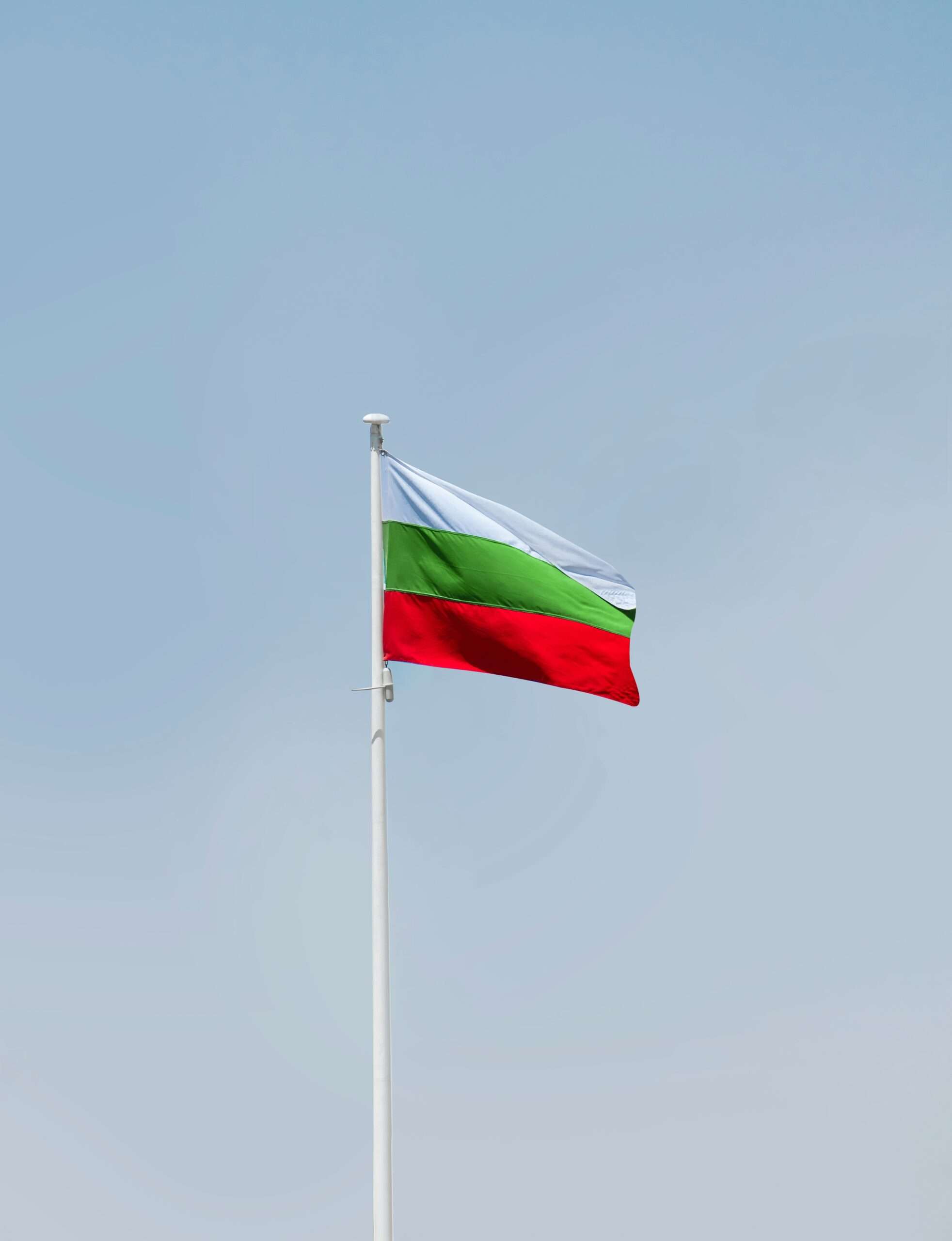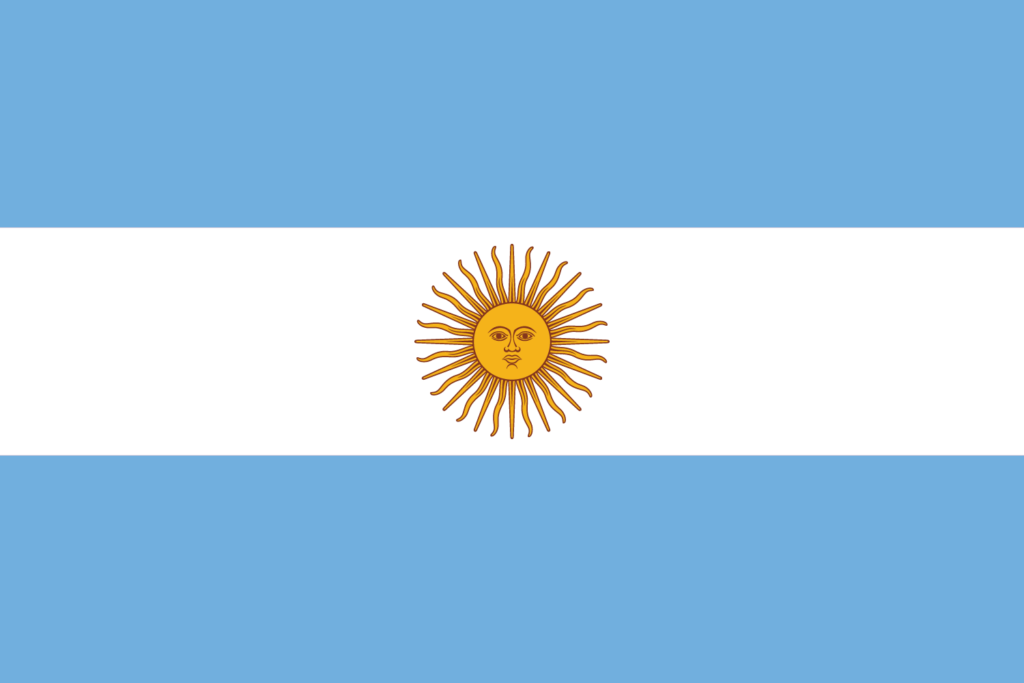The modern nation-states of Europe (like Germany, France, Italy etc.) that we see today were not there two hundred years ago. Most of Europe before the French revolution was ruled by Monarchies like the Bourbon dynasty in France, and the Habsburg dynasty of Austria.
The French revolution and Napoleonic wars gave the impetus for the rise of nationalism in Europe. A nation-state is a territorially bound sovereign state. The legitimacy of a nation-state’s rule comes from its citizens. The citizens of a nation-state share a common history and identify the nation as their homeland. Language, culture, ideology and religion also become the basis of nationalism. The growth of national self – determination among the subjects and colonies led to the challenge of the rule of monarchies and foreign powers.
‘Flags’ then become the symbol of revolutions and movements. When a nation-state is formed, the flag is a banner of its Nationalism. A national flag represents the people, their culture and the ideals upon which their nation was formed.
Description of the German Flag
The Flag of Germany consists of three colours black, red and gold as three equal horizontal bands. Black is at the top, Red is in the middle and Gold is at the bottom. The German flag’s ratio (width to length) is 3:5. There are three primary variants of the German National Flag:
Civil Flag of Germany

The Civil flag and civil ensign of Germany is the horizontal tricolour of black, red and gold.
State Flag of Germany
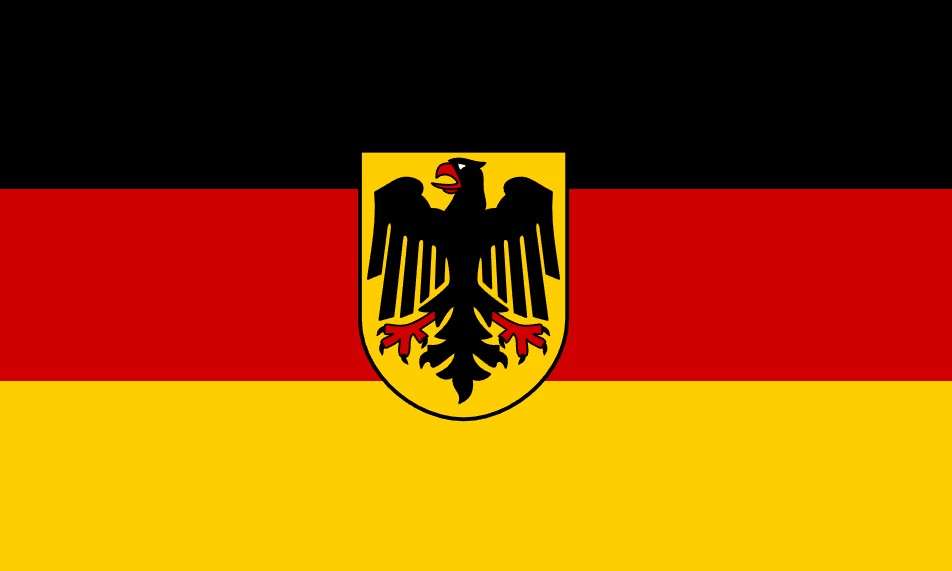
Germany’s State flag and State ensign is the tricolour with the coat of arms at the centre.
Naval Ensign of Germany

Germany’s Naval ensign is a swallowtail of the civil ensign with the coat of arms at the centre.
Origin of the German flag
The origin of the German flag can be traced back to the Holy Roman Empire’s (9th – 18th C. CE) imperial banner, with the colour scheme of black and gold. The imperial banner of the Holy Roman Empire featured a black eagle on a golden background. The Holy Roman Empire ceased to exist with the Napoleonic victory over Austria. But the colour scheme was later adopted by Austria’s Habsburg Dynasty, also known as the Black and Gold Monarchy.
Evolution of the German Flag throughout history
Holy Roman Empire’s time
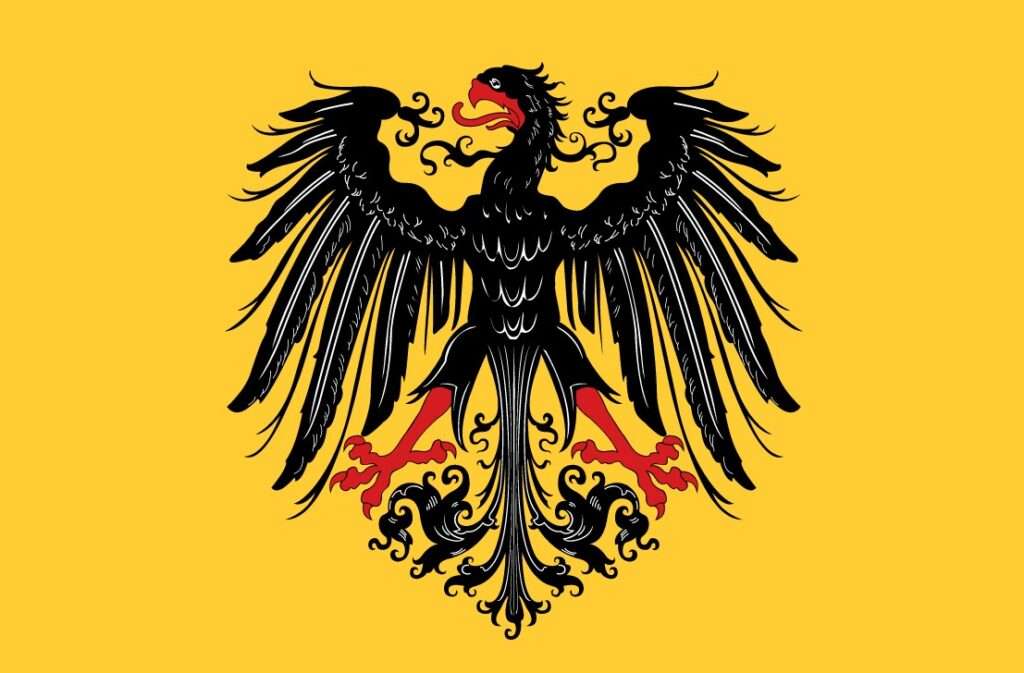
The Holy Roman Empire of the German (as German Emperors dominated) nation was established in 9th C. CE by Charlemagne. He claimed his empire was the successor of the Roman Empire, hence its name. It extended to a large area comprising Germany, Austria, Bohemia, Switzerland, the Netherlands, northern Italy etc. The Habsburgs continuously captured the throne of the Holy Roman Empire from 1440 onwards. After the Thirty years’ war (1618-1648), the Empire weakened to become a loose federation of states. It eventually ended with the Napoleonic victory over Austria. The imperial banner of the Holy Roman Emperor consisted of a Black Eagle on a Golden background. So, the origin of the German flag is generally traced back to here.
Habsburg dynasty (Black and Gold dynasty)

The Habsburgs were a royal family who traced their roots to Switzerland. The elected king of Germany, Rudolf I, was a Habsburg. He acquired the duchy of Austria for the Habsburgs. Thus the Habsburg monarchy was established in Austria. Later on, the Habsburg monarchy was split into two branches – Austrian and Spanish. They adopted the black and gold colour scheme in their flag, from the Holy Roman Empire. They were termed Black and Gold monarchy.
People’s Spring (1848)
Napoleon Bonaparte crowned himself the Emperor of France in 1804. Though he was an absolutist, he supported most of the ideas of the French revolution. He introduced the Napoleonic Code, a legal code still in use. He spread ideas of the Enlightenment and the Revolution like liberty, equality and fraternity across Europe, through his military conquests.

Napoleon was defeated (in 1815) by the combined forces of Austria, Prussia, Britain, and Russia. The Monarchies of Europe wanted a return to the old order. But a new wave of liberalism and nationalism swept across Europe. The political upheavals that followed are known as Peoples’ Spring. Though, the nation ‘Germany’ was yet to be formed. But German people started to use the Black-Red-Gold flag as the symbol of revolution against the Conservative European order. This was the first time the modern German Flag came to light.
Frankfurt Parliament (March revolution)
The March revolution is part of the 1848 revolution in different states of the German Confederation (comprising 39 states, which was formed after the defeat of Napoleon). This led to elections and the Frankfurt Parliament was the first freely elected parliament in all German States. Here, for the first time black-red-gold was declared the official colours of the German Confederation.
German Empire (1871 – 1918)
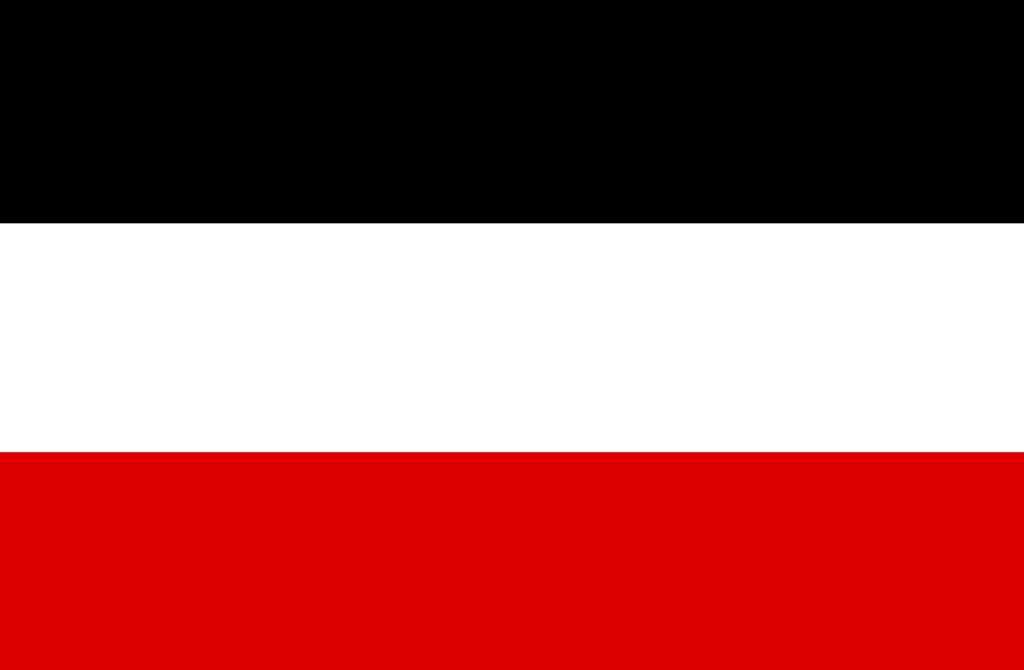
The German Confederation was dissolved after the Prussian victory in the Seven Weeks War. Then Prussia became the leader of the (new) North German Confederation. They adopted a Flag that was the blend of the Largest and Smallest members i.e Prussia having black-white and the Hanseatic League having red-white. The new flag had the colour scheme of black-white-red. Later on, the southern states also joined the North German Confederation and it was proclaimed as the ‘German Empire’ (in 1871). So, the Flag of the German Empire was the horizontal tricolour of black-white-red.
Weimar Republic (1918 – 1933)
Weimar Republic was officially termed the German Reich. It was a Constitutional Federal Republic, for the first time in Germany. Germany was defeated in the First World War (which ended in 1918). This led to Germany’s surrender in front of the Allies and the end of Imperial Germany. The Weimar Republic that was formed gave up the Imperial flag and reinstated the previous flag, the horizontal tricolour with the black-red-gold sequence on August 11, 1919.
Nazi Germany
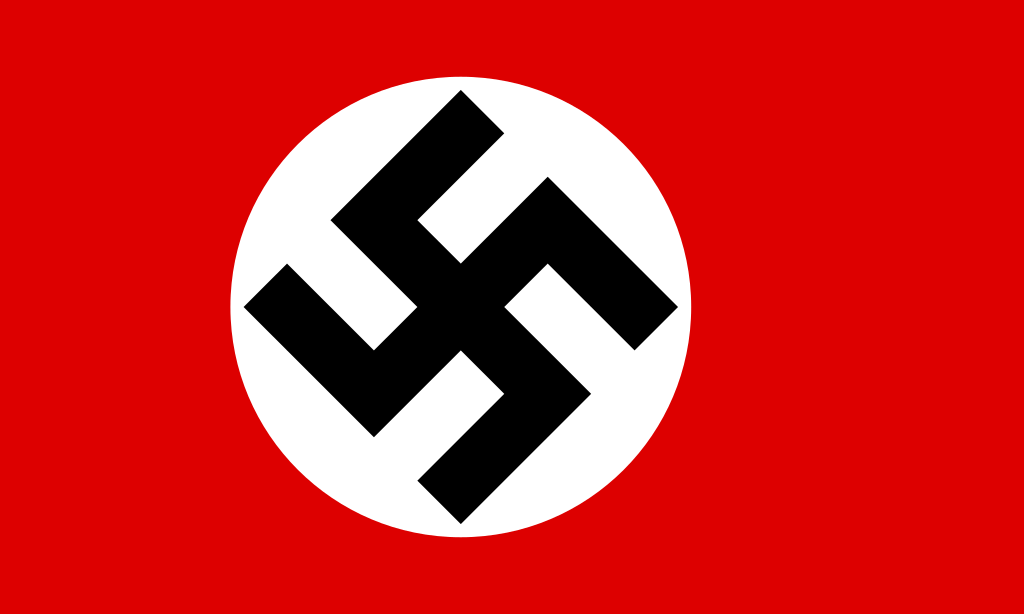
When the Nazi party came to power under the leadership of Adolf Hitler, the German flag was once again changed. They first replaced the black-red-gold sequence with the old imperial flag i.e black-white-red sequence. But later on, made the Nazi party’s flag, featuring a red background with a black swastika on a white disc, the National Flag.
After the Second World War

Germany was defeated in the Second World War. The Allies who were victorious took over Germany’s administration disbanded the German National flag and provided the international signal pennant known as C-pennant (letter C ending in a swallowtail) as a provisional civil ensign. But it was ruled that no ceremony will be accorded to this flag. This was humiliating for Germany.
During the Cold War – Division of Germany
As the Cold War ensued between the USA and USSR, Germany was divided into two halves:
West Germany
West Germany or the Federal Republic of Germany — adopted the previous black-red-gold sequence.
East Germany

East Germany or the German Democratic Republic —- adopted the same flag but with a new addition i.e the communist emblem. The communist emblem consists of a hammer and a pair of compasses inside the ears of grain. It was added to the centre of the flag.
Unified Germany
The Cold War ended with the collapse of communist governments in eastern Europe and the dissolution of the USSR. Germany also reunified (in 1990), after forty years of division. The Berlin wall which marked this division in Germany was brought down. The horizontal tricolour of black-red-gold was adopted as the Flag for the whole of Germany.
Meaning and significance
Significance of the colours in German Flag
During Napoleonic times, the black-red-gold colours symbolised the German struggle against the French forces. The Prussian Army volunteers’ (Lutzow Free Corps) uniforms had these colours. These colours represented – ‘Out of blackness (black) of servitude through bloody (red) battles to the golden (gold) light of freedom’.
Significance of symbols used in the German Flag
Coat of arms of Germany
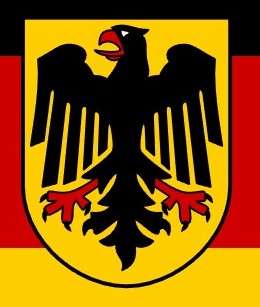
It is the oldest national symbol used in Europe. It displays a black Eagle with a red beak, a red tongue and red claws on a golden background. Eagle was the symbol of the Supreme God for the Romans. This was also the imperial banner of the Holy Roman Empire and the German Empire of 1871. With some modifications, the Federal Republic of Germany adopted the Eagle as its symbol in 1950.
Swastika used by Nazis
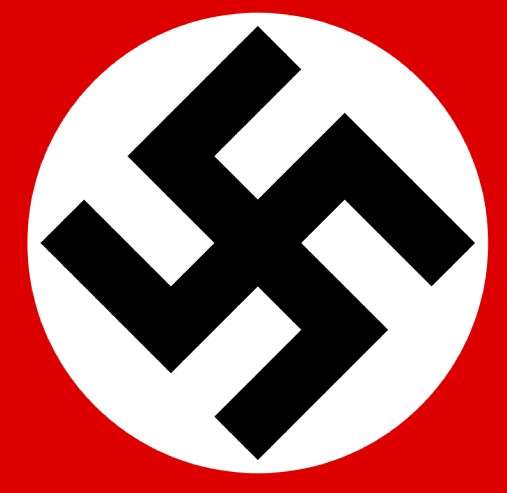
Swastika is an ancient religious, cultural symbol associated mostly with Eurasians. The word has its root in Sanskrit, meaning ‘conducive to well-being’. But this meaning was corrupted by the Nazi party. Adolf Hitler and his Nazi party incorporated it into their party flag. Hitler in his autobiography, ‘Mein Kampf’ described the Nazi flag as follows – “The red expressed the social thought underlying the movement. White is the national thought. And the swastika signified the mission allotted to us – the struggle for the victory of Aryan mankind.”
The Communist Emblem of Eastern Germany
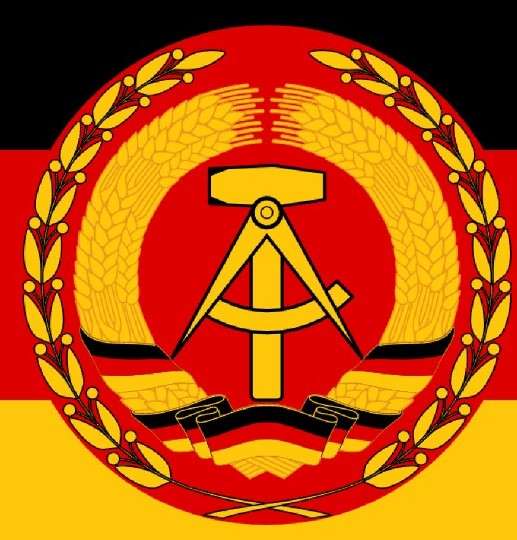
Communist Emblem was added to the centre of the German Flag, which consists of:
A hammer – which symbolises the workers.
A pair of Compasses – which symbolises the intellectuals.
Ears of grain – which symbolises the farmers.
About Germany
Germany or the Federal Republic of Germany is a central European country, known for its picturesque valleys, the Rhine river, the castles (20,000 in total), its bread and beer. It is surrounded by the Baltic and North Seas to the North and the Alps to the South. It borders 9 nations, which are Denmark, the Netherlands, Belgium, Luxembourg, France, Switzerland, Austria, the Czech Republic and Poland. The Capital city of Germany is Berlin.
Germany is full of stunning mountains, and the Bavarian Alps and is drained by rivers like the Rhine, Danube and Elbe. Germany has a temperate climate and is rich in biodiversity. Trees like oaks, beeches, spruce and pines are found here. Wild animals like fox, badger, hare, mouflon (wild sheep variety) and Eurasian beavers are also found.
Historically, Germany has been called ‘Das Land der Dichter and Denker’ (the land of poets and thinkers). German scientists, writers, and philosophers played a major role in the development of Western thought. German Philosophers like Immanuel Kant contributed to the Enlightenment, German Idealism was established by Friedrich Hegels and Joseph Schelling, and the Communist theory was formulated by Karl Marx and Friedrich Engels. Germany is also famous for its architectural contributions like the Carolingian and Ottonian styles.
Culturally rich Germany is famous for its festivities. Oktoberfest is a two-week long folk festival in Munich. People are dressed in folk costumes. They enjoy amusement rides, music, dance and games. It attracts more than 6 million people each year to Munich.
By: Pallabi Devi
